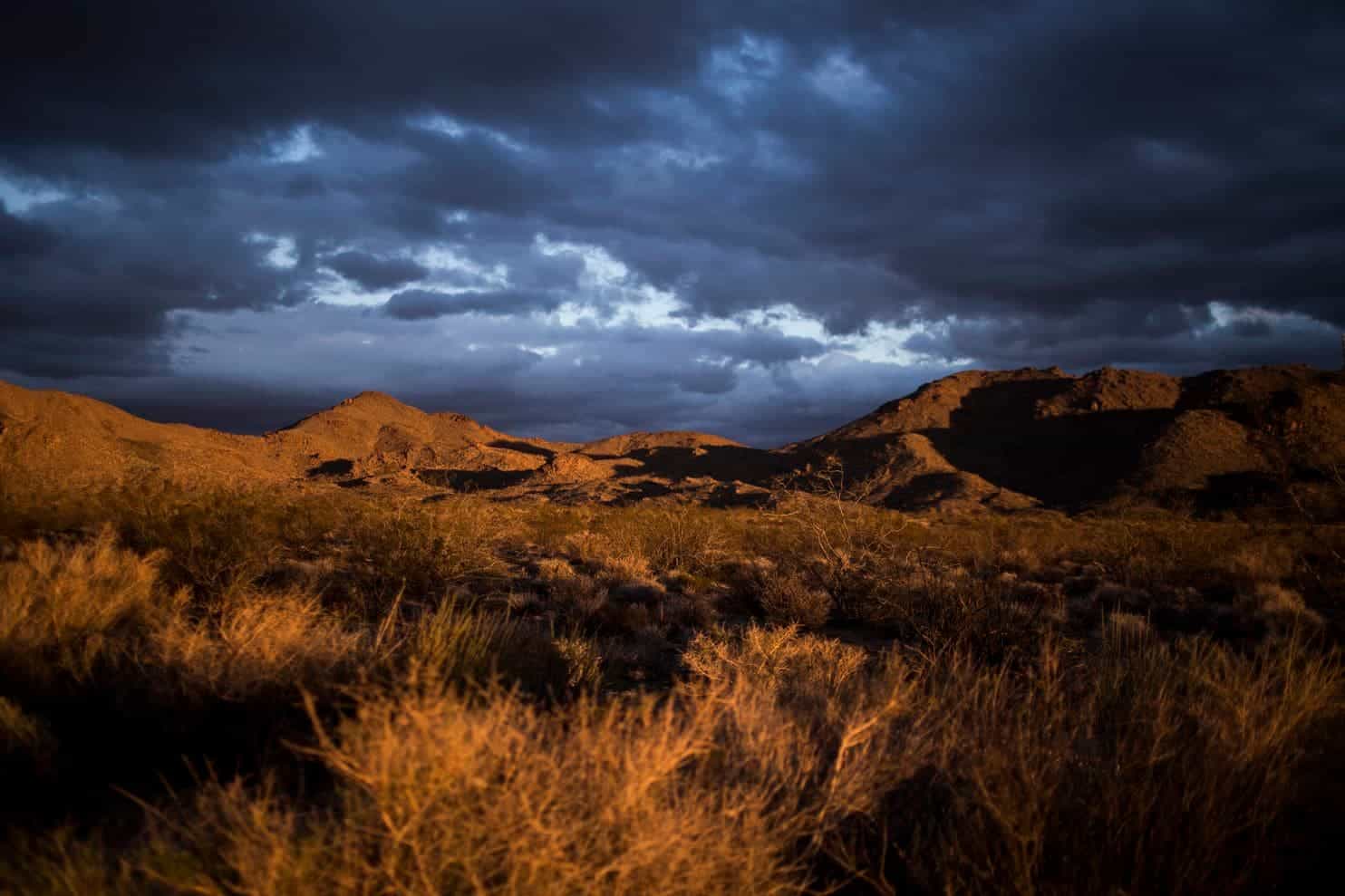

Photo: The sun sets on the Mojave National Preserve in Kelso, Calif., in early February. There is water under the desert, and whether to tap it on a commercial scale is a crucial debate in California. (Jenna Schoenefeld for The Washington Post)
CADIZ VALLEY, Calif. — The landscape here is more Martian than Earthly, rust and tan plains that rise in the distance to form the Old Woman Mountains to the east and the Bristols and Marbles to the north and west.
Almost everything here is protected by the federal government. The opportunity or threat, depending on your point of view, lies beneath the dusty surface that, after a recent rain, blooms with sprays of yellow desert dandelion.
Whether to tap it on a commercial scale or leave it alone is a decades-old question the Trump administration has revived and the California legislature is visiting anew. The debate will help resolve whether private enterprise can effectively manage a public necessity in a state where who gets water and where it originates endures as the most volatile political issue.
It also is among several critical decisions on water policy facing the new Democratic governor, Gavin Newsom, who in his first State of the State address in February highlighted what he called California’s “massive water challenges.” He already has scaled back one major water project — turning a proposed twin-tunnel pipeline to run beneath the Sacramento-San Joaquin River Delta into a single tunnel — and will soon consider changes in river-water allocations for urban and agricultural users.
“Our water supply is becoming less reliable because of climate change, and our population is growing because of a strong economy,” Newsom said. “That means a lot of demand on an unpredictable supply.”
Newsom said this state of 40 million people, many living in near-desert climates, must “get past the old binaries like farmers versus environmentalists or North versus South.”
“Our approach can’t be either/or,” he said. “It must be yes/and.”
His message will be tested here with a long-standing proposal to […]
Full article: A massive aquifer lies beneath the Mojave Desert. Could it help solve California’s water problem?
Clean water is essential for life, yet millions of Americans unknowingly consume contaminants through their…
Human brains contain higher concentrations of microplastics than other organs, according to a new study, and the…
From the Office of the Governor: In anticipation of a multi-day, significant atmospheric river in Northern California,…
From Governor Newsom: Scientists, water managers, state leaders, and experts throughout the state are calling…
Photo: A harmful algal bloom in Milford Lake, Kansas, made the water appear bright green.…
An expanded plastic foam coffee cup is at a donut shop in Monterey Park, California.…